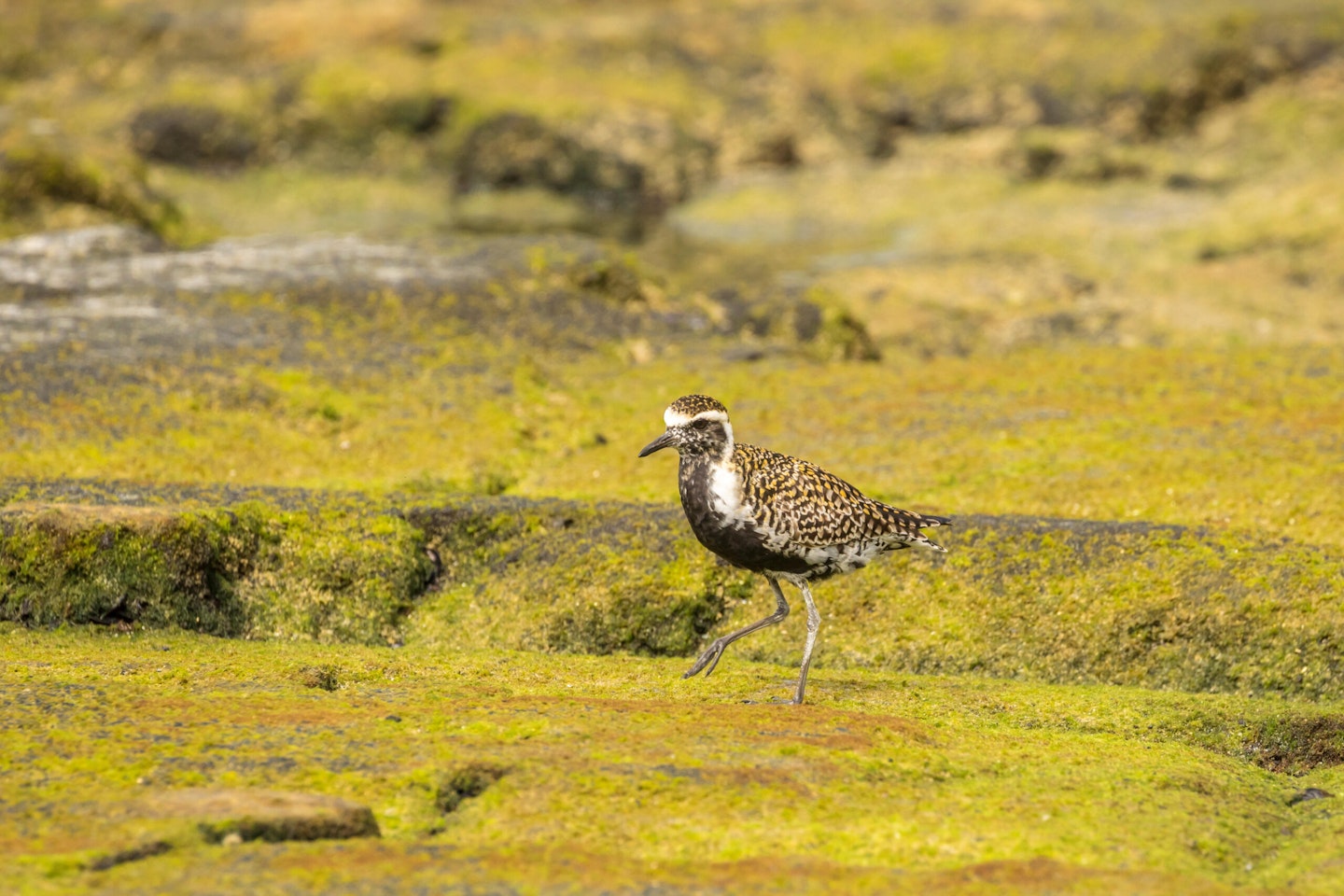August is traditionally the month of summer holidays. But in the world of birding, it is the start of autumn. Indeed, some birders declare autumn has begun in July. Whatever the season, there are birds on the move. Rare and common birds. Here are some juicy rarities and a couple of more common birds you may want to look for this August.

Wilson’s Petrel
One of the most abundant seabirds in the world, the Wilson’s Petrel aka Wilson’s Storm Petrel is an annual, but much-desired bird in UK waters. They breed in the southern hemisphere, but many winter in the northern hemisphere, and a few reach the extreme south-eastern part of British waters every year. Most are seen on specialist seawatching pelagic boat trips sailing out of Scilly in the late summer. Wilson’s Petrels are small, but slightly larger than the tiny (European) Storm Petrel and have a subtly different flight with long glides and often dangling long legs which also extend beyond the tail (and the feet have yellow webs). Wilson’s lack the white underwing stripe seen on Storms and show a pale panel in the upperwing.

Pacific Golden Plover
The Pacific equivalent of the Golden Plover was formerly (along with the American Golden Plover) ‘lumped’ as Lesser Golden Plover. Now known as Pacific Golden Plover, it is readily separable from American by those in the know. Recent years have seen a notable increase in records of this rare wader, as well as growth in confidence in their identification. At this time of year, expect any PGP to be an adult, probably moulting out of its striking black underparts. They are smaller and slimmer than Golden Plovers, with long legs (and feet which project beyond the tail in flight), grey axillaries (‘armpits’) and a call reminiscent of the ’chewit’ of a Spotted Redshank.

Common Sandpiper
If you live in the south and east of the country, as a lot of us do, you probably see Common Sandpipers in small numbers during spring and late summer/autumn passage (including at a gravel pit or reservoir edge near your, this month). However, there are some 15,000 pairs of these curious ‘wagtails’ of waders breeding along upland streams, lochs etc further north and west. They are characterful little birds, quite long tailed for a wader (though short tailed compared to most birds), with a slightly awkward, pot-bellied gait with yellow-green legs. Don’t forget to check for the white ‘nick’ in front of the folded wing which helps tell them from the slightly larger, darker, shorter-tailed (and white rumped) Green Sandpiper.

Sandwich Tern
The big, pale, front-heavy Sandwich Tern is a coastal breeder, with colonies scattered around the sandy coasts of the UK (with some 11,000 pairs in total). They are ‘patch gold’ for inland patch workers, but do pass through the country, even at this time of year. But the best place to see them is along the coast, either at their colonies or fishing the sea to feed their young. They are handsome, shaggy-crested terns, with a yellow-tipped black bill, black legs and feet, a relatively short tail (for a tern) and often a white forehead in late summer.

Red-necked Phalarope
The gorgeous little Red-necked Phalarope is an anomaly. They are tiny waders which habitually swim (and have lobed toes to help this), going round in circles, stirring up the water to feed by picking up ‘food’ from the surface. And they have ‘reversed’ roles when it comes to brooding and childcare: the females are the brightly-coloured ones and the duller males brood the eggs and tend the young. These phalaropes breed in small numbers (a little more than 20 pairs) mainly on selected Scottish islands (eg, Fetlar, Shetland). In late summer, we see our first juveniles passing through (also in very small numbers). Juveniles are black-masked with prominent yellow stripes on the dark back. They may turn up on freshwater or brackish pools, on the water or picking along the edge
